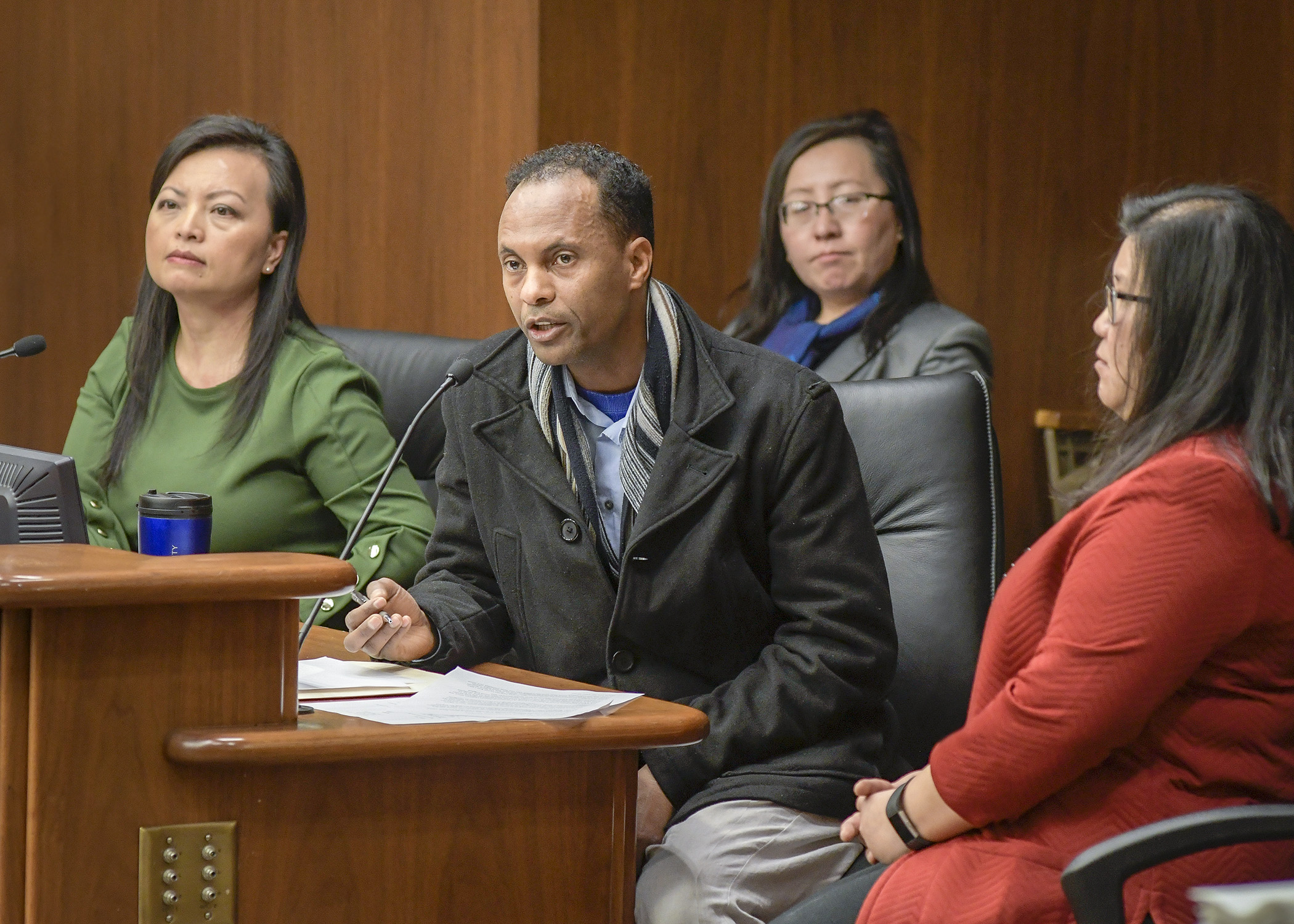Bill would increase funds for English language learners

As the state faces an impending workforce shortage, Rep. Kaohly Her (DFL-St. Paul) believes one way to address the problem is through bolstering the education of English language learners.
HF448, sponsored by Her, a former ELL student, would significantly increase English language learner funding to provide for more extensive services, cover districts’ unfunded ELL costs, and ultimately lead to a better educated society.
“One way to fill this gap is to continue our state’s rich tradition of welcoming immigrants and refugees,” she said.
Her noted that ELL students who have not fully mastered English by high school have only about a 40 percent chance of completing high school and receiving a diploma. “Please keep in mind this is not only an investment in our ELL students but also an investment in the future of our state.”
The bill was held over Wednesday by the House Education Finance Division for possible omnibus bill inclusion. The companion, SF26, awaits action by the Senate E-12 Finance and Policy Committee. Sen. Chuck Wiger (DFL-Maplewood) is the Senate sponsor.
Her’s district, St. Paul Public Schools, has a particularly large ELL population of 11,000, where 1 in 3 students are enrolled in services. However, immigrant and refugee populations are settling throughout Minnesota, which is reflected in school district enrollment and ELL funding. Education Department data from last year showed that more than 40 percent of school districts across the state had a shortfall in their funding for ELL, for a total deficit exceeding $104 million.
“This is not just an issue impacting urban school districts, but districts across the state,” Her said. “When looking at how ELL funds are distributed between urban, suburban, rural and charters, Minneapolis and St. Paul would receive about 25 percent of the funds. The rest is split between the suburbs and Greater Minnesota.”
Todd Sesker, superintendent of Faribault Public Schools, said its English language learner population climbed from a few students in 2000 to 25 percent of its current student body. He highlighted the funding impacts as well as the innovative Newcomer Program they’re using to help students learn English, get and stay on grade level, and eventually graduate.
“We’ve seen tremendous success with this program. It has turned around, and it has changed, a lot of our kids’ lives,” he said.
Faribault is able offer the improved services following passage of an operating levy, however, the schools are still facing an English language learner cross-subsidy of $1.4 million, which is in addition to their special education cross-subsidy of $3.2 million.
The bill would seek to help districts like Faribault by increasing the revenue each annually receives for ELL services from $704 to $1,400 per English language learner. Schools that have a high concentration of ELL students — 11.5 percent or more of its student population — currently receive an additional $250 per English learner. The bill would increase that amount to $1,000 per ELL student.
In total, the statewide allocation for ELL funding would increase from about $59 million to $142 million per year. This would be the first per pupil funding increase for English learners since 2003.
“We have a challenging population where we offer some great EL services,” Sesker said. “We want to serve these kids and we want to make sure that this investment that you guys are making to us is paying off in the long run so these kids are being responsible citizens.”
Related Articles
Search Session Daily
Advanced Search OptionsPriority Dailies
Ways and Means Committee OKs proposed $512 million supplemental budget on party-line vote
By Mike Cook Meeting more needs or fiscal irresponsibility is one way to sum up the differences among the two parties on a supplemental spending package a year after a $72 billion state budg...
Meeting more needs or fiscal irresponsibility is one way to sum up the differences among the two parties on a supplemental spending package a year after a $72 billion state budg...
Minnesota’s projected budget surplus balloons to $3.7 billion, but fiscal pressure still looms
By Rob Hubbard Just as Minnesota has experienced a warmer winter than usual, so has the state’s budget outlook warmed over the past few months.
On Thursday, Minnesota Management and Budget...
Just as Minnesota has experienced a warmer winter than usual, so has the state’s budget outlook warmed over the past few months.
On Thursday, Minnesota Management and Budget...
